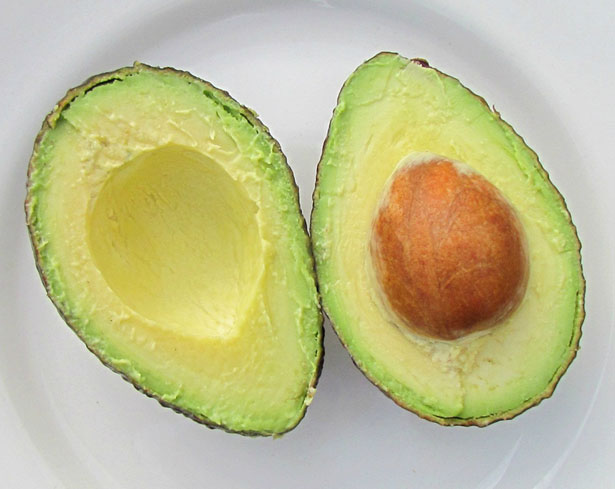- Author: Ben Faber
APHIS is proposing to amend its fruits and vegetables regulations to allow the importation of avocados from continental Spain into the United States. (This proposal does not include avocados from the Balearic Islands or the Canary Islands.)
As a condition of entry, avocados from Spain would have to be produced in accordance with a systems approach that would include requirements for importation in commercial consignments; registration and monitoring of places of production and packinghouses; grove sanitation; and inspection for quarantine pests by the national plant protection organization of Spain.
Consignments of avocados other than the Hass variety would also have to be treated for the Mediterranean fruit fly (Medfly) either prior to moving to the United States or upon arrival prior to release. Consignments would also be required to be accompanied by a phytosanitary certificate with an additional declaration stating that the avocados were grown and inspected and found to be free of pests in accordance with the proposed requirements.
This action would allow for the importation of avocados from Spain into the United States while continuing to provide protection against the introduction of quarantine pests.
We will consider all comments that we receive on or before April 1, 2013.
You may submit comments by either of the following methods:
- Federal eRulemaking Portal: Go to http://www.regulations.gov/#!documentDetail;D=APHIS-2012-0002-0001
- Postal Mail/Commercial Delivery: Send your comment to
Docket No. APHIS-2012-0002
Regulatory Analysis and Development
APHIS PPD Station 3A-03.8
4700 River Road Unit 118
Riverdale, MD 20737-1238
Supporting documents and any comments we receive on this docket may be viewed at http://www.regulations.gov/#!documentDetail;D=APHIS-2012-0002-0001 or in our reading room, which is located in room 1141 of the USDA South Building, 14th Street and Independence Avenue SW., Washington, DC. Normal reading room hours are 8 a.m. to 4:30 p.m., Monday through Friday, except holidays. To be sure someone is there to help you, please call (202) 799-7039 before coming.


- Author: Ben Faber
I recently traveled to the Malaga area of Spain where there is quite a bit of new planting going on. The industry celebrated its industry in 2002 with the World Avocado Congress and we saw a considerable expansion of the industry then and more has occurred since then. More than 22,000 acres are in the ground. Much of the plantings are occurring on almond and olive ground which have become less profitable. Average grower acreage is similar to that of California's at about six acres per grower.
Production is along the southern coast of Andalucia and Valencia with some produced in the Canary Islands. Although a “Mediterranean” climate, it is both hotter and more humid on average than the California production area. Typically ‘Hass' is harvested two months earlier there than here. Scarcity of water in some areas, although in the Malaga area there are a series of dams and water is not limiting. Labor cost and availability are similar to that in California. Also, unlike California, the fruit snap harvested and any stems remaining are clipped at the packing house. This more efficient harvest system is also used in Australia. A discussion of the method is described in the November 2002, AvoResearch Vol 2, Issue 2.
The industry produces 150 M pounds, the bulk of which goes to France and Germany where they are willing to pay good prices for quality fruit. It is a short drive to Paris and Berlin and fruit arrives in good condition. The bulk of this export market is in France and three export companies dominate this export. Per capita consumption in Spain is only about one pound per year, 3.5 pounds in France and now the US is about 4.5 pounds.
There are over 12 nurseries supplying trees to the industry, but three dominate. As here, growers are looking at high density plantings at as close as six feet apart, in row. They are using the standard varieties , such as ‘Reed', ‘Lamb Hass', ‘Fuerte', ‘Zutano', ‘Bacon', ‘Pinkerton' and ‘Hass', but they are looking at newer varieties, such as ‘Carmen' and ‘Mendez'. There is still a good market for greenskins. They also have several rootstocks that we don't have, such as ‘Atkinson' used in calcareous soil and ‘Albaida' used in situations of Rosellinia fungus. This is a fungus similar to oak root fungus which they don't have as much as we do. Recently a long term trial was initiated evaluating over 10 scion varieties on five rootstocks, including ‘Dusa' which is one of the most popular rootstocks now.
There is Phytophthora root rot there, but it is not as extensive as in our industry. They also don't seem to have much of a problem with black streak, leaf blight, bacterial canker, and stem blight. These are diseases associated with poor water management and poor water quality. Some of the water quality reports I saw were really quite good compared to many of our waters. They do have a problem with Persea Mite which arrived there in 2005. It still is not under good biological control, but I saw an organic orchard that didn't spray, and the damage was acceptable. So something is finally kicking in.
Phytophthora disease control is done as here with mulches and phosphonates. One of the major sources of mulch was shells from the almond industry. With the eclipse of the almond industry, the shells have become very expensive and are going into other products. They are developing a yardwaste collection system, but it is not as close to the avocado orchards as to make it a cheap source.




